“Actors who have tried to play Churchill and MacArthur have failed abysmally because each of those men was a great actor playing himself.”
William Manchester (quoted in Book-of-the-Month Club News, June 1983)
Archives for January 2009
TT: Omega/alpha
As expected, the Washington Post has announced that Book World, its stand-alone book-review supplement, will publish its last issue on February 15. Thereafter the Post‘s book-related content will be integrated into the paper–but it will also be consolidated into a separate online section.
According to the New York Times:
Under the new arrangement at Book World, the combined pages allocated to books in the two sections will be equivalent to about 12 tabloid pages, down from the 16 published in the stand-alone section. The staff of Book World, already shrunk dramatically from its peak, will remain intact.
I’m sorry about that, but I must confess that the larger decision to kill off the print version means nothing to me, not because I don’t like Book World but because I read all newspapers (including the one for which I write) online. As far as I’m concerned, the fuss over this development is pointless, given that the magazine will continue to be available as a unified entity on the Post‘s Web site.
I’ve said it before, but it’s worth repeating: it is the destiny of serious arts journalism to migrate to the Web. This includes newspaper arts journalism. Most younger readers–as well as a considerable number of older ones, myself among them–have already made that leap. Why tear your hair because the Washington Post has decided to bow to the inevitable? The point is that the Post is still covering books, and the paper’s decision to continue to publish an online version of Book World strikes me as enlightened, so long as the online “magazine” is edited and designed in such a way as to retain a visual and stylistic identity of its own.
Newspapers are in trouble now because their editors and publishers have spent the past decade turning their faces from the inevitable effects of the coming of the Web. Writers would do well not to make the same mistake. So enough with the anguished kvetching already. Let’s turn loose of the past and see what we can make of the future.
* * *
Sarah Weinman’s take is here.
TT: I shook hands with Piney Brown
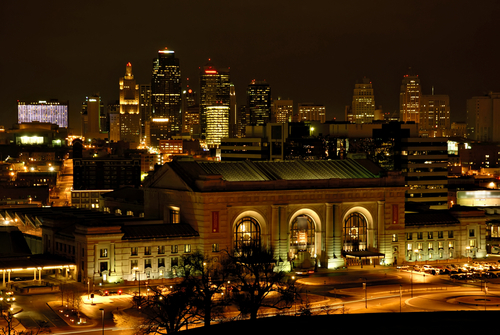 Kansas City, where I lived from 1975 to 1983, left a deep and indelible mark on me. I grew up in Smalltown, U.S.A., but Kansas City was the place where I went to college, rented my first apartment, played my first jazz gig, became a professional writer, and met the woman with whom I was to spend the first part of what I’m now old enough to call my middle years. For a time I took it for granted that I’d put down roots and raise a family there. But life, as is so often the case, had other plans for me, and when I left town and headed east, it was for good.
Kansas City, where I lived from 1975 to 1983, left a deep and indelible mark on me. I grew up in Smalltown, U.S.A., but Kansas City was the place where I went to college, rented my first apartment, played my first jazz gig, became a professional writer, and met the woman with whom I was to spend the first part of what I’m now old enough to call my middle years. For a time I took it for granted that I’d put down roots and raise a family there. But life, as is so often the case, had other plans for me, and when I left town and headed east, it was for good.
Because my kinfolk live on the other side of Missouri, I rarely have occasion to return to Kansas City. The last time I did so was to give a lecture in 1999. So when I heard that Kansas City Repertory Theatre was putting on a production of The Glass Menagerie staged by David Cromer, one of the directors whom I admire most, I knew I had to go and see it, not only for good and sufficient professional reasons but also because far too much time had gone by since I’d seen the city that I once called home.
I still know a number of people in Kansas City and its environs, and it would have taken no more than a half-dozen phone calls for me to come up with someone to share every meal I ate there last weekend. Instead I kept my presence strictly to myself. It wasn’t that I didn’t want to see my old friends–I miss them very much–but I knew that I urgently needed to spend some time alone with the past.
For me Kansas City is the intersection of a dozen roads not taken, the unknown, unknowable country that Stephen Sondheim wrote about in Follies:
The choices that you make
Aren’t all that grim.
The worlds I’ll never see
Still will be around,
Won’t they?
The Ben I’ll never be,
Who remembers him?
I remember the Terry that I’ll never be, but I don’t think about him very often, immersed as I am in this day and the next, and of late the press of work has grown so unrelenting that I’ve started to feel myself losing touch with the Terry I once was, the wide-eyed small-town boy who came north in search of…what? The Terry I am now? Or the one I used to be?
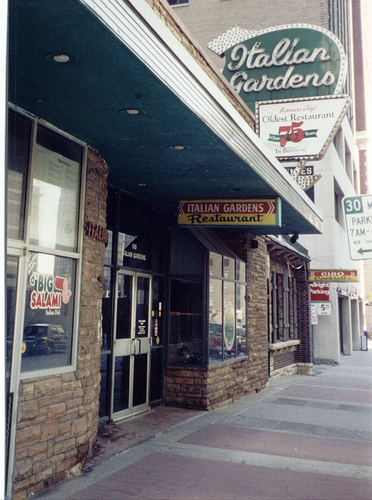 I went to Kansas City to spend a day communing with myself when young, wondering whether I’d know where to look for him. I drove toward what sounded like a familiar address, took what seemed like a familiar exit, and promptly found myself in the middle of a city that looked nothing like the one I remembered. Where was Italian Gardens, the restaurant where I learned to love garlic? Where was the bank in which I’d worked after graduating from college? Both had been razed to the ground and replaced with shiny new buildings of whose existence I knew nothing. It felt as though I had awakened one morning, looked at my hand, and discovered that two of my fingers had vanished in the night.
I went to Kansas City to spend a day communing with myself when young, wondering whether I’d know where to look for him. I drove toward what sounded like a familiar address, took what seemed like a familiar exit, and promptly found myself in the middle of a city that looked nothing like the one I remembered. Where was Italian Gardens, the restaurant where I learned to love garlic? Where was the bank in which I’d worked after graduating from college? Both had been razed to the ground and replaced with shiny new buildings of whose existence I knew nothing. It felt as though I had awakened one morning, looked at my hand, and discovered that two of my fingers had vanished in the night.
I resumed my pilgrimage after an uneasy sleep, and was greatly relieved to learn that my hotel was on the edge of the Kansas City Power & Light District, a large-scale mixed-use development that has swallowed up the part of town in which I worked a quarter-century ago. Most of the rest of downtown Kansas City, it turned out, is as it was, and the compass of memory soon led me unerringly to the Music Hall, the Folly Theater, and the Lyric Theater, all still intact and open for business, just as they were when I was an eager young man who longed to hear all the music there was in the world.
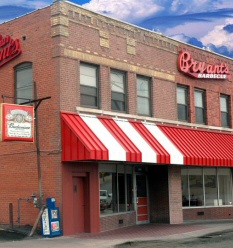 Many of my enduring memories of Kansas City have to do with food, a fact for which Calvin Trillin is to blame. In 1974 he published a book called American Fried: Adventures of a Happy Eater in which he sang the praises of the Kansas City restaurants of his own misspent youth in language so mouthwateringly evocative that I resolved to eat my way through the book from cover to cover. I didn’t quite make it, but I put in more than my fair share of time eating at Winstead’s Drive-In, having succumbed to what Trillin called “the monumental purity of the Winstead’s hamburger.” On Saturday I doffed my cap to Trillin by lunching at Winstead’s, and that night I dined at Arthur Bryant’s, the barbecue joint that he described as “the single best restaurant in the world.” I wouldn’t go that far, but the burnt ends at Bryant’s remain ambrosial, and though the facade (if you want to call it that) has been gussied up by the new owners, the dining room is as worn and grubby as ever.
Many of my enduring memories of Kansas City have to do with food, a fact for which Calvin Trillin is to blame. In 1974 he published a book called American Fried: Adventures of a Happy Eater in which he sang the praises of the Kansas City restaurants of his own misspent youth in language so mouthwateringly evocative that I resolved to eat my way through the book from cover to cover. I didn’t quite make it, but I put in more than my fair share of time eating at Winstead’s Drive-In, having succumbed to what Trillin called “the monumental purity of the Winstead’s hamburger.” On Saturday I doffed my cap to Trillin by lunching at Winstead’s, and that night I dined at Arthur Bryant’s, the barbecue joint that he described as “the single best restaurant in the world.” I wouldn’t go that far, but the burnt ends at Bryant’s remain ambrosial, and though the facade (if you want to call it that) has been gussied up by the new owners, the dining room is as worn and grubby as ever.
I can’t say the same for Eighteenth and Vine, a corner not far from Bryant’s that is known by name to all lovers of traditional jazz and celebrated in the lyrics of “Piney Brown Blues,” a musical tribute to a legendary Kansas City saloonkeeper that was first recorded in 1938 by Big Joe Turner and Pete Johnson:
I dreamed last night
I was standin’ on Eighteenth and Vine
I shook hands with Piney Brown
And I could hardly keep from cryin’.
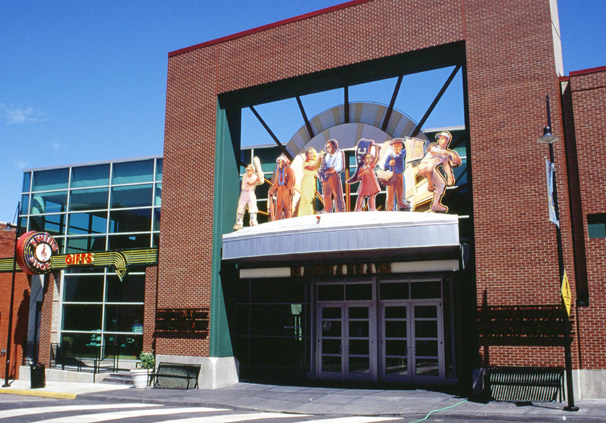 That moldering block is now the site of the American Jazz Museum, a shiny neon palace that houses an ersatz nightclub called the Blue Room. No doubt it is a good thing that Kansas City is home to such an institution, but it is so self-evidently out of place that I found it hard to warm to–especially since the surrounding neighborhood shows no visible signs of having been renewed by its presence.
That moldering block is now the site of the American Jazz Museum, a shiny neon palace that houses an ersatz nightclub called the Blue Room. No doubt it is a good thing that Kansas City is home to such an institution, but it is so self-evidently out of place that I found it hard to warm to–especially since the surrounding neighborhood shows no visible signs of having been renewed by its presence.
Elsewhere, though, I found surprisingly little evidence of change. The great parkways and boulevards that sweep through Kansas City city look much the same as they always did. So does Liberty, the suburb north of town that is home to William Jewell College, my alma mater. Liberty looks like Smalltown, just as Jewell looks like Animal House‘s Faber College, the place where Knowledge Is Good, and I was relieved to find that both appear to be largely untouched by the passage of time.
 Relieved–but also unnerved. For Kansas City has changed so little that I found it all too easy to retrace my youthful steps. My first apartment? It’s still there. So is Mario’s, the Italian grinder shop that I used to favor for first dates. So is the suburban ranch house on whose front lawn I fell in love with a pretty girl one starry autumn night some thirty-odd years ago. So is the hilltop park overlooking the city to which I brought another girl a few years later, as yet unaware of the pivotal role that she would play in the next installment of the story of my life.
Relieved–but also unnerved. For Kansas City has changed so little that I found it all too easy to retrace my youthful steps. My first apartment? It’s still there. So is Mario’s, the Italian grinder shop that I used to favor for first dates. So is the suburban ranch house on whose front lawn I fell in love with a pretty girl one starry autumn night some thirty-odd years ago. So is the hilltop park overlooking the city to which I brought another girl a few years later, as yet unaware of the pivotal role that she would play in the next installment of the story of my life.
To revisit the precincts of one’s youth can be a disconcerting affair. Everywhere I looked I saw the Terry I’ll never be, the one I wrote about in my first book:
We are born into a vast room whose walls consist of a thousand doors of possibility. Each door is flung open to the world outside, and the room is filled with light and noise. We close some of the doors deliberately, sometimes with fear, sometimes with calm certainty. Others seem to close by themselves, some so quietly that we do not even notice. “I want to play the violin,” I said to my parents one day, and nobody bothered to tell me that a half-dozen doors slammed shut at that very moment–not just the door marked BECOMES JAZZ TRUMPET PLAYER but the one that said BECOMES SMALL-TOWN LAWYER, the one my father would someday encourage me to walk through, not knowing that it was already shut. I went off to college, and a door marked MARRIES HIGH SCHOOL SWEETHEART AND SPENDS LIFE IN SMALLTOWN, U.S.A. closed softly in the distance….
I wrote those words in 1991, and since then I’ve spent precious little time wondering what lay behind all those closed doors. Driving through Kansas City last Saturday was like revisiting my thousand-doored room. I drove a hundred miles that morning, and the further I drove, the stranger I felt. It occurred to me for the first time that nothing I had imagined for myself when young had come to pass. How was that possible? What did it mean?
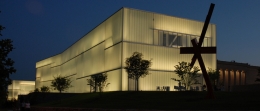 My last stop was the Nelson-Atkins Museum of Art, one of America’s foremost medium-sized art museums, though it wasn’t widely recognized outside the art world as such until two years ago, when it opened a new wing designed by Steven Holl that was devoted to contemporary art. This made the Nelson a destination museum, something it should always have been, since its permanent collection contains the best Caravaggio in America and show-stoppingly fine examples of the work of (among many others) El Greco, Titian, Rembrandt, Poussin, Chardin, Constable, Corot, Monet, Cézanne, van Gogh, Brancusi, de Kooning, Fairfield Porter, Richard Diebenkorn, and Agnes Martin. As for the new wing, Tyler Green posted extensively two years ago on the Bloch Building. “If there has been a better American museum building built since Renzo Piano’s Menil Collection 20 years ago,” he wrote, “I haven’t been there.” I agree. It is as good as museum architecture gets.
My last stop was the Nelson-Atkins Museum of Art, one of America’s foremost medium-sized art museums, though it wasn’t widely recognized outside the art world as such until two years ago, when it opened a new wing designed by Steven Holl that was devoted to contemporary art. This made the Nelson a destination museum, something it should always have been, since its permanent collection contains the best Caravaggio in America and show-stoppingly fine examples of the work of (among many others) El Greco, Titian, Rembrandt, Poussin, Chardin, Constable, Corot, Monet, Cézanne, van Gogh, Brancusi, de Kooning, Fairfield Porter, Richard Diebenkorn, and Agnes Martin. As for the new wing, Tyler Green posted extensively two years ago on the Bloch Building. “If there has been a better American museum building built since Renzo Piano’s Menil Collection 20 years ago,” he wrote, “I haven’t been there.” I agree. It is as good as museum architecture gets.
Alas, the Nelson played no part in my lost youth. I went there exactly once when I lived in Kansas City, my eyes not yet having been opened to the visual arts. Not until years later did I come back to town for a visit and find out what I’d been missing. It was precisely for this reason, though, that seeing the Nelson now had the paradoxical effect of pulling me out of my bittersweet reverie and returning me to the present. As I strolled through the galleries, I thought of the art-covered walls of my New York apartment, my nights on the aisle, Pops and The Letter, my far-flung friends, my beloved and indispensable Mrs. T. My heart overflowed with gratitude for the goodness of the life that happened to me instead of the one I’d imagined. The past started to slip away as if I were looking at it in the rear-view mirror of my rental car.
The next day my niece Lauren, who is going to school at the University of Missouri in Columbia, drove to Kansas City to see The Glass Menagerie with me. We chatted happily over dinner, talking only of this day and the next. Then we crossed the street to the theater and took our seats, and a few minutes later the lights went down and an actor spoke. The play is memory, said Tom Wingfield, Tennessee Williams’ alter ego, and I caught my breath. I’d been too wrapped up in the past to remember that I was in town to see a play spun out of the memories of another writer who spent part of his youth in Missouri….
The play is memory. Being a memory play, it is dimly lighted, it is sentimental, it is not realistic. In memory everything seems to happen to music. That explains the fiddle in the wings.
I don’t know what Williams’ fiddle was playing, but right then mine was playing “Piney Brown Blues,” and I could hardly keep from crying. Nor did I try.
TT: Snapshot
Excerpts from “Walking Distance,” a 1959 episode of The Twilight Zone written by Rod Serling and starring Gig Young. The score is by Bernard Herrmann:
(This is the latest in a weekly series of arts-related videos that appear in this space each Wednesday.)
TT: Almanac
That year at Oakland High
When we were seventeen,
The grass from there to San José
Was tall and cool and green.
I see it now.
Too young and brash was I
To know what time could mean.
That old acacia long cut down
Was felt but never seen.
I see it now.
That world I knew is lost to me,
Loves have come and gone.
The years go racing by.
I live as best I can,
And all at once I know it means
The making of a man.
I see it now.
William Engvick, “I See It Now” (music by Alec Wilder)
CD
Jerry Junkin and the Dallas Wind Symphony, Lincolnshire Posy: Music for Band by Percy Grainger (Reference). An exquisitely well-played collection of Grainger’s folk-flavored compositions and arrangements for concert band. Lincolnshire Posy, his six-movement masterpiece, is performed in a manner comparable in quality to the long-celebrated 1958 recording by Frederick Fennell and the Eastman Wind Ensemble. That version remains the gold standard, but it’s out of print, and this one has the advantage of being coupled with such delectable miniatures as “Shepherd’s Hey,” “Spoon River,” “The Duke of Marlborough Fanfare,” and the deservedly ever-popular “Irish Tune from County Derry” (that’s “Danny Boy” to you). Grainger’s way with a folksong was both charming and brilliantly imaginative, and what he didn’t know about scoring for concert band wasn’t worth knowing. This might just be the best Grainger album to come along since Benjamin Britten’s 1969 Salute to Percy Grainger (TT).
TT: John Updike, R.I.P.
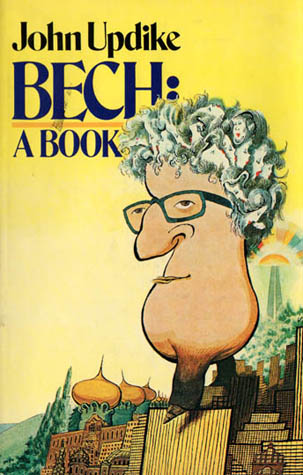 I never succeeded in engaging with John Updike’s work, and I’ve always assumed that the fault is mine. Throughout my lifetime he was the very model of a modern man of letters, a quintessentially professional writer pur sang who tried his hand at everything (he even wrote a play, Buchanan Dying) and was widely and impressively varied in his interests. I couldn’t help but admire his seriousness and industry, and from time to time I’d give him another try, never to any avail. His prose style in fiction struck me as unpleasingly gray and thick, his essays and reviews as fluent but essentially conventional. The only book of his I really liked was Bech: A Book, and I didn’t like it well enough to hang onto my copy when I pruned my library a few years ago. Yet time and again friends whose taste I trusted assured me that I was wrong about Updike, and insisted that I should try, try again.
I never succeeded in engaging with John Updike’s work, and I’ve always assumed that the fault is mine. Throughout my lifetime he was the very model of a modern man of letters, a quintessentially professional writer pur sang who tried his hand at everything (he even wrote a play, Buchanan Dying) and was widely and impressively varied in his interests. I couldn’t help but admire his seriousness and industry, and from time to time I’d give him another try, never to any avail. His prose style in fiction struck me as unpleasingly gray and thick, his essays and reviews as fluent but essentially conventional. The only book of his I really liked was Bech: A Book, and I didn’t like it well enough to hang onto my copy when I pruned my library a few years ago. Yet time and again friends whose taste I trusted assured me that I was wrong about Updike, and insisted that I should try, try again.
In the end I finally gave up, and decided that Updike was one of those undeniably important artists, like Wagner or Dreiser, to whose virtues I would always be deaf. It’s been years since I last read a word of his. Needless to say, I regret his passing, and I have no doubt that the world of letters will be much the poorer for his absence. I only wish I understood why.
* * *
Novelist Thomas Mallon offers an alternative view:
He was deeply interested in sex and God, but more than anything he was interested in working–steadily and prodigiously. The Rabbit books, taken together, are the great American novel of the second half of the twentieth century. Even when he was through with them, he kept writing fiction as if, culturally, it still counted–as if it could still land a writer on the cover of Time….
Read the whole thing here.
The New York Times obituary is here.
DVD
The King and I. Now that TV screens are growing bigger and brighter, it’s becoming possible–just–to appreciate the glories of wide-screen musicals without seeing them in a theater. Even if you don’t much care for Rodgers and Hammerstein, the 1956 CinemaScope film of their musical version of Anna and the King of Siam is of the first importance because of Jerome Robbins’ dances–especially since Robbins personally supervised their filming. “The Small House of Uncle Thomas,” his Asian-flavored retelling of Uncle Tom’s Cabin, looks cramped and illegible on a conventional TV, but to watch it on a HDTV-friendly screen is to be astonished anew by the endless ingenuity and unaffected freshness of Robbins’ choreographic storytelling (TT).
